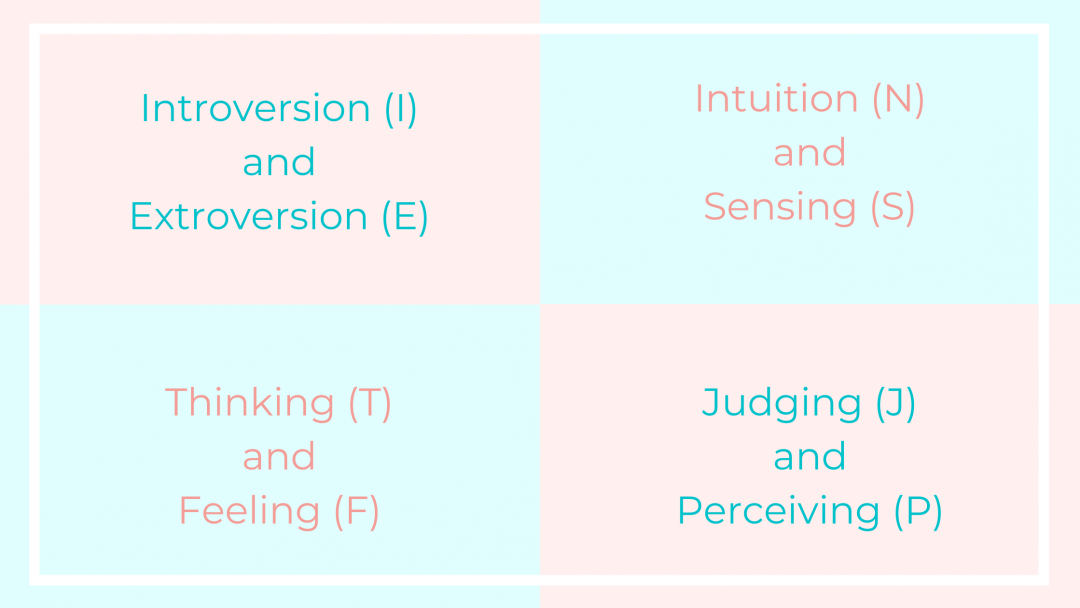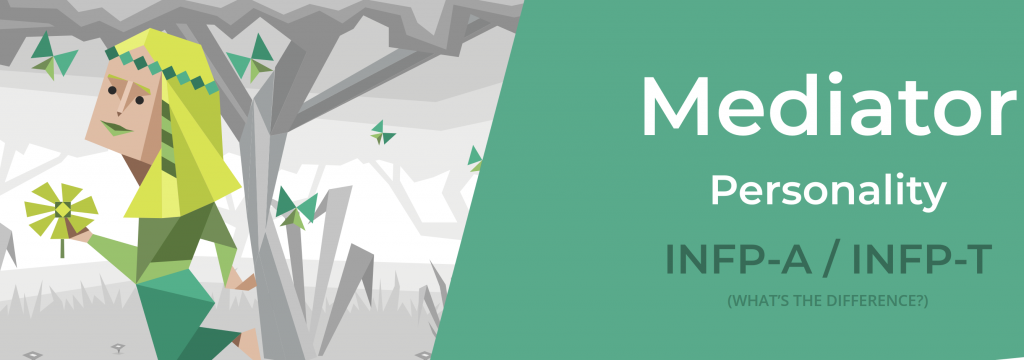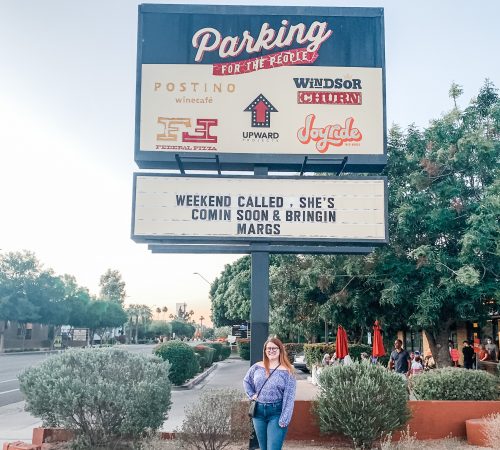
Myers-Briggs: 4 Letters that Can Change Your Team
If you’re interested in self-help or personal development, it’s very likely that you’ve taken a version of the Myers-Briggs personality assessment/type indicator at some point in your life. It’s one of my favorite ways to dig deeper into my personality as well as the personalities of the people around me. For those of you that have not heard of this test before, I’ll give you some background information.
The Myers-Briggs Type Indicator (MBTI) essentially looks at 4 key personality functions and assigns a letter based on each function. Each function has 2 types associated with it, meaning that depending on which way you answer the questions, you could be 1 of 16 types.
Introversion vs. Extroversion

This first category addresses where you focus your attention. If you are more introverted, your focus is primarily going to be on your inner world. Alternatively, if you are more extroverted your focus will be on the external world. I’ve also heard of these concepts representing where you gain your energy from. For example, you can be sociable as an introvert, but you need breaks and time to yourself to recharge before going back into a social environment. Extroverts are likely struggling right now with having to be home alone most of the time, as their energy comes primarily from interacting with other people. Introversion is represented by the letter “I” and extroverted by the letter “E”.
Intuition vs. Sensing

The next trait revolves around the way you take in and process information. If you are more intuitive, your focus when receiving information is on the meaning that you get from it or the theory around it. If you are more sensing, your focus is based around the 5 senses. From my understanding, it is basically a difference between the theoretical implications or evaluating the literal aspects. If you’re more fact-based, you’re probably sensing, and if you are a “read between the lines” type of person you are probably intuitive. Intuition is represented by the letter “N” (probably because we already used “I”) and Sensing is represented by an “S”.
Thinking vs. Feeling

Next, you’ll look at how you like to make decisions. If you are a thinker, you are more likely to make a decision based on facts, pros-and-cons lists, or with your head. If you are a feeler, you are more likely to make a decision based on how it will impact people or based on a set of values. Basically you are looking to create or maintain harmony. Thinkers are represented by a “T” and feelers by an “F”.
Judging vs. Perceiving

The last trait that is determined by this assessment derives how you deal with the world. Honestly, I’ve always found this trait the hardest to explain. That’s possibly due to the fact that I used to fall under judging, but have recently switched to perceiving. Because of this, I’m relying heavily on the information from the official Myers-Briggs website (listed in the references) so bear with me.
This trait focuses on when you are dealing with the external world, how do people perceive you. If you are judging, you primarily show your decision making preference (T/F) to other people. This person tends to thrive in organized environments where decisions are made. If you are perceiving, you primarily show your information receiving preference (N/S) to other people. This person thrives in flexibility and when they are able to adapt. These traits are represented by the letters “J” and “P”, respectively.
Ok, but how do I use Myers-Briggs at Work?
Something fun that my team does when we bring on a new hire, is that we all go through the assessment and I compile information on all of our personality types to share with each other. My favorite resource for this is 16 Personalities. This website offers an assessment to determine your type for FREE. Not only that, but it provides a plethora of free information relating to your type. (I also signed up for their email list and receive monthly information on my type.) There are 2 sections under your type that are incredibly useful for a work environment: Career Paths and Workplace habits.

My personality type is INFP (Introversion, Intuition, Feeling, and Perceiving) and is known as the mediator. Some fun facts about me that I’ve learned are…
- I work better when I can share through creative expression and personal growth (LOL at me starting this blog)
- I will not thrive when I’m in a high-stress, team-heavy environment where I have to deal with bureaucracy. That’s why I’ve been 100x happier working from home, where I am generally left to do my work without too much interruption.
- If I don’t find that the work I need to do is worth doing, it’s likely that I won’t do it. I’ve run into a lot of problems with this over the years. If I don’t find something interesting or that valuable, I will procrastinate as much as I possibly can.
- I like working on projects and with a small team, not easy and/or forgettable tasks.
- My three basic workplace truths are that I value harmony, need an emotional and moral connection to my work, and hate dealing with bureaucracy
Can you see how those traits might be helpful to know, especially if you’re my manager? After looking through these traits, you learn what type of work I will enjoy and work hard on. You also learn that if I can’t find value in it, you’re going to need to help me find some if you want it to get done in a timely way.
References
Check out the links below to learn more about Myers-Briggs or your personality type!
- https://www.myersbriggs.org
- https://www.16personalities.com/articles/our-theory
- ttps://www.16personalities.com/ – Images pulled from here
- https://www.16personalities.com/infp-personality – To learn more about me!





No Comments